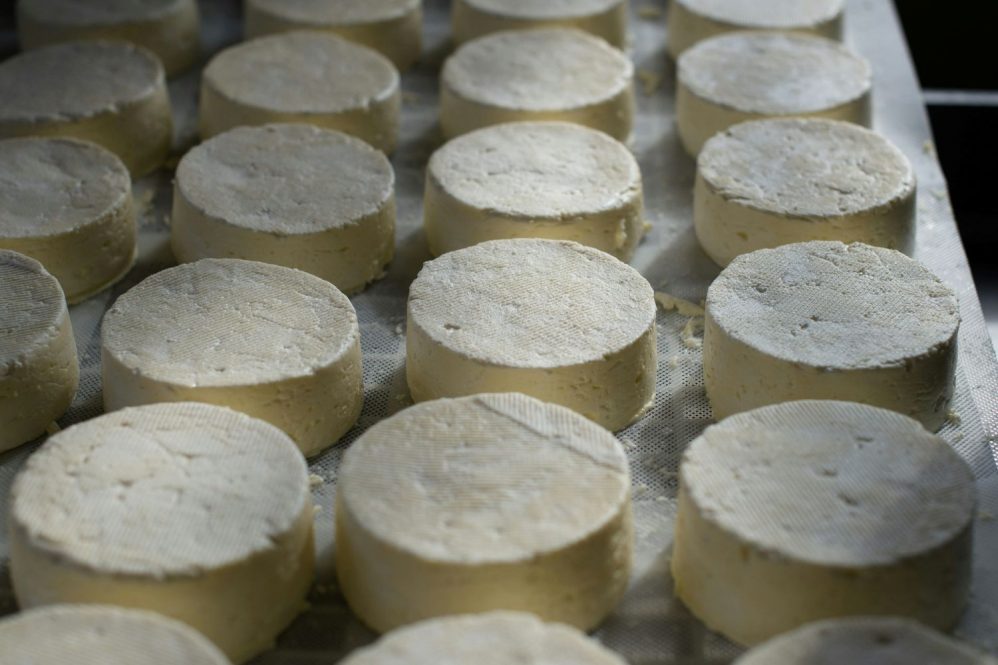Food microbiologist Dennis D'Amico demonstrated that bacteriophages can effectively reduce the amount of common foodborne pathogens in milk

Zoe Richardson on Unsplash
Dennis D'Amico, associate professor of animal science, has demonstrated that bacteriophages can effectively reduce the amount of common foodborne pathogens in milk.
Bacteriophages are viruses that infect bacteria. Some phages follow a lytic life cycle where they inject their DNA into the host cell and hijack its mechanisms to reproduce. When the number of phages grows too large, the cell will burst, killing the bacteria. The released phages will continue to self-propagate, seeking out more and more of their target bacteria to infect and kill. Then, once they have used up all the bacteria, they will simply die off.
Each bacteriophage is highly specific and will only target one genus or one species, and in some cases, only one strain of a bacteria.
"If you have a target like a foodborne pathogen - like E. coli - there are phages that will really only infect E. coli," says D'Amico. "So, any good bacteria in your gut and in your food will be unaffected, and your human cells will be completely unaffected."
Bacteriophages are an organic anti-bacterial option that has no impact on the color, flavor, or texture of the food.
"The reception for the use of phages from producers is very high because it's a natural approach," says D'Amico, who also has an appointment with UConn Extension to share his expertise with communities.
D'Amico looked at a series of commercially available bacteriophages that target the most common dairy-borne pathogens: Listeria, Salmonella, and E. coli to see how effective they were in destroying these bacteria in milk and cheese.
Each of the products D'Amico evaluated were a mixture of phages that target certain pathogenic species or strains.
"You do a big mix of these phages with the hope that you'll cover all the strains that you might encounter in your food product," D'Amico says.
D'Amico saw significant reductions in pathogen counts in pasteurized milk. These effects were observable within a few hours and held steady for a week.
Listeria counts decreased by a factor of 10,000 compared to the control. For E. coli it was a bit more complicated, as some strains decreased by only a factor of five, while others decreased by 100 times.
These findings were published in Food Microbiology.
In raw milk, the phages did not reduce counts of Listeria or E. coli. In fact, phage counts decreased.
This is because the heat used in pasteurization changes the shape of the proteins that would otherwise interfere with the phage's activity. In raw milk, these proteins bind to the phages and prevent them from reaching their bacterial targets.
Salmonella, however, was a different story. The phages successfully reduced that pathogen's count in both pasteurized and raw milk.
In pasteurized milk, the phages reduced pathogen counts by a factor of 200-1,500. In raw milk, the reductions were more modest but still significant at 13 to nearly 200 times. These findings were also published in Food Microbiology.
D'Amico did not observe significant reductions in either gouda (a semihard, aged cheese) or queso fresco (a soft, fresh cheese).
"Cheese is the act of turning a liquid to a solid," D'Amico says. "Those phages are now trapped in a spot, and the bacteria are trapped in a spot, and their ability to find each other is greatly reduced. So, we saw a major reduction in their effectiveness during the cheese making process."
However, there were modest reductions in pathogen counts compared to the control in the cheese samples treated with the phages.
"If you step back, there was a mild effect if you add the phage during the cheese-making process and that difference between treatment and control holds throughout the whole period," D'Amico says. "Our goal would be to increase the impact during the cheesemaking process because it would probably maintain its effectiveness through the storage period."
The major limitation for using bacteriophages to combat dairy pathogens remains the cost.
D'Amico had to add 1,000,000 times as many phages as pathogen to see these results in milk.
Given that the phage products are relatively expensive, this is a significant barrier to their widespread application, especially for smaller producers.
"There were a million times more phages than bacteria," D'Amico says. "It doesn't matter from a human health standpoint, or a product quality standpoint, but from a wallet standpoint you have to add quite a bit of this product to get the effect we observed."
This work relates to CAHNR's Strategic Vision area focused on Enhancing Health and Well-Being Locally, Nationally, and Globally and Ensuring a Vibrant and Sustainable Agricultural Industry and Food Supply.






